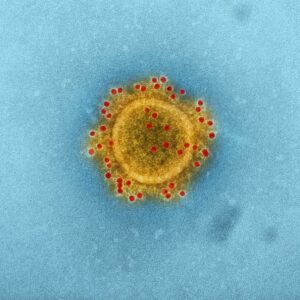![]()
Asthma is a chronic respiratory condition that affects millions of people worldwide. Characterized by inflammation and narrowing of the airways, it can significantly impact daily life and, if left unmanaged, lead to severe complications. This article explores the causes, symptoms, treatment options, and preventative strategies for managing asthma effectively.
Understanding Asthma
Asthma affects approximately 262 million people globally and causes around 455,000 deaths annually according to the World Health Organization. While it can develop at any age, asthma is often diagnosed during childhood. With appropriate care, most individuals can lead active, healthy lives despite their condition.
Causes of Asthma
Asthma is a complex disease with multiple contributing factors. It arises from a combination of genetic and environmental influences.
- Genetic Factors
Individuals with a family history of asthma, allergies, or eczema are at a higher risk of developing the condition.
Genetic variations affecting the immune system and airway function play a critical role.
- Environmental Triggers
Allergens: Common allergens like pollen, mold, dust mites, and pet dander can provoke asthma symptoms.
Air Pollution: Exposure to smoke, industrial emissions, and vehicular exhaust exacerbates asthma, particularly in urban settings.
Infections: Respiratory infections, particularly in childhood, are associated with asthma development.
- Lifestyle and Occupational Factors
Smoking, including passive smoking during childhood, increases asthma risk.
Occupational exposure to irritants like chemicals, dust, and fumes can trigger asthma, known as occupational asthma.
Symptoms of Asthma
Asthma symptoms can vary from mild to severe and may worsen during asthma attacks, also called exacerbations.
Common Symptoms Include:
- Wheezing: A whistling sound during breathing.
- Shortness of Breath: Difficulty in breathing, especially during physical activity or at night.
- Chest Tightness: A feeling of constriction in the chest.
- Coughing: Often worse at night or early morning, sometimes with mucus production.
Severe Symptoms:
Extreme difficulty breathing.
Cyanosis (bluish tint to lips and face).
Rapid worsening of symptoms despite medication.
Asthma Treatment Options
Effective asthma management involves a combination of medications, lifestyle adjustments, and monitoring.
- Medications
Medications are categorized into long-term control drugs and quick-relief medications.
A. Long-Term Control Medications:
Inhaled Corticosteroids (ICS): Reduce airway inflammation. Examples include:
Fluticasone
Budesonide
Leukotriene Modifiers: Tablets like montelukast reduce airway swelling and mucus.
Long-Acting Beta-Agonists (LABAs): Used in combination with ICS for better control. Examples include:
Salmeterol
Formoterol
Biologics: Target severe asthma by modulating immune responses. Examples:
Omalizumab
Mepolizumab
B. Quick-Relief Medications:
Short-Acting Beta-Agonists (SABAs): Provide immediate relief during asthma attacks. Examples:
Albuterol
Levalbuterol
Oral Corticosteroids: Used for severe exacerbations but not recommended for long-term use due to side effects.
- Inhaler Techniques
Proper use of inhalers is crucial for medication efficacy. Asthma patients should learn and regularly review correct inhaler techniques with their healthcare providers.
- Asthma Action Plans
A personalized asthma action plan helps patients monitor symptoms, manage medications, and recognize signs of worsening asthma.
Asthma Prevention and Management
While asthma cannot be completely cured, preventive measures can reduce the frequency and severity of symptoms.
- Avoiding Triggers
Identify and minimize exposure to allergens and irritants.
Use air purifiers and keep indoor environments clean to limit dust and mold.
- Vaccinations
Annual flu shots and pneumococcal vaccines can prevent respiratory infections that worsen asthma.
- Healthy Lifestyle
Exercise: Regular physical activity strengthens the lungs but should be tailored to avoid exercise-induced asthma.
Diet: Anti-inflammatory foods like fruits, vegetables, and omega-3-rich fish may benefit asthma patients.
Weight Management: Obesity exacerbates asthma symptoms; maintaining a healthy weight is essential.
- Smoking Cessation
Smoking damages the lungs and worsens asthma. Quitting smoking significantly improves outcomes.
Asthma in Children
Asthma is one of the most common chronic diseases in children. Managing pediatric asthma requires special attention to growth, school performance, and emotional well-being.
Key Considerations:
Ensure children have access to medications during school hours.
Educate caregivers and teachers about asthma management.
Monitor for developmental milestones to identify potential side effects of medications.
Quantitative Impact of Effective Asthma Management
- Reduced Hospitalizations: Asthma management programs can reduce hospital visits by up to 30-50%.
- Improved Quality of Life: Patients with controlled asthma experience significantly fewer missed work or school days.
- Cost Savings: Preventive care reduces healthcare costs associated with emergency treatments.
Future Directions in Asthma Management
Innovations in asthma care include:
Smart Inhalers: Devices that track usage and connect to apps for better medication adherence.
Gene Therapy: Research is exploring ways to modify genetic factors contributing to asthma.
Airway Remodeling Treatments: Experimental therapies aim to reverse structural changes in the airways.
Final Note
Asthma is a manageable condition when approached with a comprehensive strategy. By understanding the causes, recognizing symptoms early, adhering to treatment plans, and taking preventive measures, individuals can lead fulfilling lives despite asthma.
The global burden of asthma highlights the need for awareness, access to healthcare, and continued research to improve patient outcomes. Whether you’re a patient, caregiver, or healthcare professional, taking an active role in asthma management is key to combating this chronic condition effectively.



